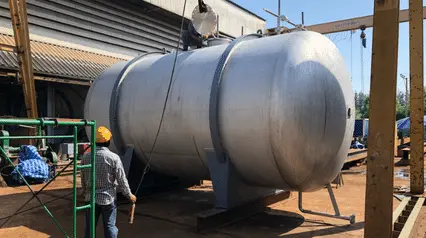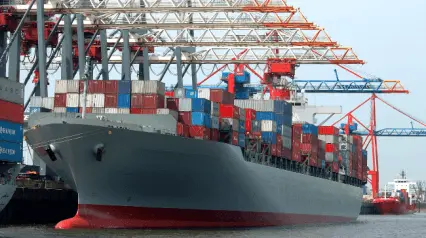What is Shipyard Management?
Shipyard management is an important role that covers handling and overseeing many aspects of boats’ construction and repair work. It requires the ability to supervise the implementation of shipbuilding projects and ensure that they are structured and organized proactively for optimum efficiency. At its core, shipyard management is about understanding the complexities of maritime engineering and integrating the necessary tools adaptively and effectively to complete these tasks. Thorough knowledge of engineering principles and attention to detail are essential for any successful shipyard manager.
Shipyards can remain competitive in today’s ever-evolving maritime market by taking a comprehensive approach to keeping operations running on time and within budget. From managing workers to devising strategies that optimize quality, productivity, and profits, shipyard managers are invaluable in leading their teams to success.
Different Shipyard Processes and Operations
Shipyard Management encompasses many processes, from ship design and contracting to production and project handover. It includes the initial drafting of plans for vessels, followed by construction, retrofitting or alteration if needed, repairs, and maintenance activities throughout the shipbuilding period until final delivery is made.
Ship Design
Below are the steps typically involved in the ship design process:
Feasibility Study
A feasibility study is essential to evaluating a project’s technical and financial potential. When conducted properly, it can be an integral element in the success of that endeavor. Facts and figures must be provided to support the presentation.
Concept Design
A concept design is an improved feasibility design and essential measurements. It yields a General Arrangement (GA) with all the necessary specifics for any shipyard to provide accurate quotations, enabling the owner to decide whether to commit within their budget and present it to others interested in investing.
Contract Design
Following the concept design, the contract design offers customers a comprehensive foundation for entering into a new-building agreement with the shipyard. This step ensures all prior work is established and lets potential buyers receive fixed prices from shipyards.
Basic Design
The basic design phase aims to create the project to gain acceptance from the classification society, flag state, and other applicable authorities. Technical specifications must also be provided for the main equipment. As makers’ information is necessary for ship design, it’s impossible to complete fundamental ship design without selecting manufacturers for primary systems.
Detail Design
Pre-coordination design is crucial to establishing a consistent basis for detailed engineering and interface between the yard, owner, suppliers, and designer. This integration phase is vital as a final check related to system redundancy and availability. We will confirm space reservations and must address all the essential details regarding various primary items’ locations. Additionally, monitoring piping, ducting, and cabling is a must to ensure no inconsistencies or disruptions in the overall design.
Shipbuilding
Below are the steps typically involved in a shipbuilding process:
Lofting
Once the design is finalized, a lofting process begins with dividing the full hull into sections. Sections are transferred to large wooden tables or loft floors. It provides a large-scale representation of the ship as it will look when completed in full size.
Numerical Control Cutting (NC)
NC cutting is the process by which craftsmen cut out specific forms from steel plates based on a model, or “lofting.” NC cutters can automate the process when lofted drawings are fed into them. Advanced technology now allows this task to be automated, which was previously done manually with a cutting machine.
Bending
Crafting a ship requires bending steel plates to form its intricate curved surface. To achieve this, press machines or gas burners heat up and slowly shape the plate into whatever model is required. This type of thermal processing necessitates skilled craftsmanship as it must be done by hand to get accurate results—indeed, an art form!
Assembly
Constructing a large ship all at once is time-consuming and inefficient. Block construction involves dividing larger components into smaller blocks and assembling them in the shipyard. Once these parts have been cut and bent with NC machines, they can be welded together to form an entire 3D unit.
Block Installation and Assembly
The blocks are installed into the ship’s frame and welded together per the design. It’s typically done with a robotic or automated welding system to ensure accuracy and quality control.
Painting
The assembly of a ship is only the beginning—once the painting has begun, its true potential begins to shine. A coat of paint enhances the aesthetic appeal, protects against corrosion, and abides by stringent environmental standards. Painting is integral to constructing any vessel, making it one of the essential steps on any shipbuilding journey.
Launching
Finally, after months of hard work and dedication, the vessel is ready to take its maiden voyage. This momentous occasion is marked by a festive celebration, with the ship slowly being guided out of the building dock and into its new home – the open waters. It’s a momentous occasion as the ship is finally ready to embark on its journey.
Outfitting
Outfitting entails equipping the finished hull with engines, pipes, and electric wires. This crucial task requires the utmost attention to detail as it affects the boat’s overall performance. It’s essential to ensure that all systems are correctly connected and functioning optimally to guarantee smooth sailing.
Trial
After the outfitting is complete, perform a thorough performance test of the vessel’s speed and turning capabilities. It allowed us to ensure that all requirements and specifications outlined in our contract with the owner were satisfied and met appropriately.
Delivery
The ship will be handed over to its new owners once a successful trial has been conducted. It generally involves signing delivery documents and ensuring that the ship’s papers are in order before making the voyage. The vessel is then ready to set sail and serve its purpose for years.
Repairs and Maintenance
There are 4 main kinds of repairs and maintenance that are necessary for a ship’s well-being:
- Predictive maintenance – This is when mechanics can check a machine to see if it is working well before it has a problem. Predictive maintenance is something that all ships and vehicles go through during their life cycle.
- Corrective maintenance – This type of maintenance is relatively straightforward. Mechanics usually need to resolve an issue when it arises quickly.
- Risk-based maintenance – This maintenance type focuses on the essential equipment likely to break down. You have to think about how long the equipment will last and how likely it is to break down.
- Condition-based maintenance – Condition-based maintenance is a way to keep track of equipment conditions over time systematically. As a result, it helps predict the need to replace a component.
Conversion and Retrofitting
Conversion and retrofitting modify an existing vessel to fit new requirements or regulations. It could include changing propulsion systems, deck layouts, and hull modifications to fit the new purpose of the vessel. This work requires close attention to detail and is essential when ensuring a ship’s longevity.
FAQs About Shipyard Management
Adhering to the Occupational Safety and Health Administration (OSHA) regulations is of utmost importance for any agency, especially when it comes to shipyard employment. You must pay attention to the requirements outlined in 29 CFR Part 1904 concerning Recording and Reporting Occupational Injuries and Illnesses.
Shipyard management is a highly complex role that requires knowledge in several disciplines. Here are some of the responsibilities of a shipyard manager:
- Prepare all standard documents necessary for the work and distribution to yard services
- Clarify with customer representatives of any unclear items in the customer specification.
- Inspect the vessel on the way and report on arrival.
- Agree with customer representative regarding vessel condition on arrival and docking requirements, considering specifications and yard procedures.
- Request technical information (drawings, specifications, owner’s decision on spare parts, etc.).
An agreement comprising a contract and yearly payments are established between the ship’s owner and the ship management firm. This contractual arrangement grants permission to this company to manage, operate, maintain, and lease out the vessel over a predetermined period.
Working in the shipbuilding industry involves many responsibilities for riggers, including lifting and maneuvering large items on board ships or around the yard. To complete their work effectively and safely, these individuals must become familiar with rigging hardware such as ropes, slings, shackles, clamps, chain falls, and come-a-longs.




